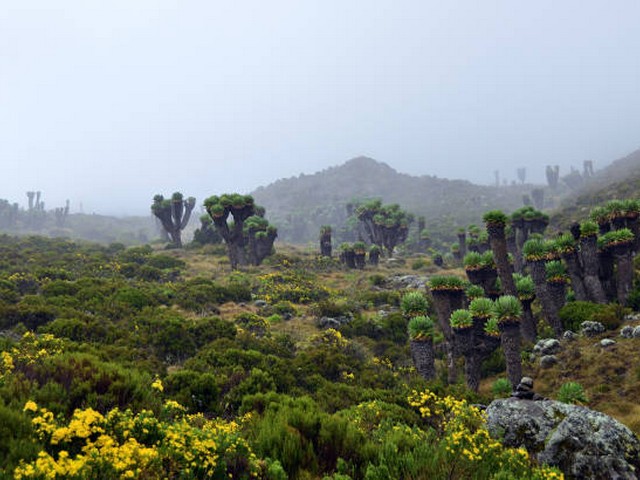Kilimanjaro Trekking With Historical Insights: A Journey Through Time and Terrain
Embark on an unforgettable adventure where every step tells a story. Mount Kilimanjaro isn’t just the highest peak in Africa; it’s a historical monument, a timeless guardian standing over the land. When you choose to trek Kilimanjaro with the Kilimanjaro Centre For Trekking and Ecotourism (KCTE), you’re not just climbing a mountain—you’re walking through the pages of a vibrant history book set against the backdrop of breathtaking natural beauty.
Why Choose Kilimanjaro For Your Historical Trek?
Kilimanjaro is more than just a mountain; it’s a canvas displaying some of the most significant geological and cultural narratives that date back millions of years. As you traverse its slopes, you’re following the trails of the Chagga tribe, early European explorers, and the countless adventurers who have shaped the mountain’s lore. Choosing to explore Kilimanjaro is choosing to connect with the past, understand the present, and inspire your future.
The Routes of History: Choosing Your Path
Kilimanjaro’s routes are as diverse as its history. Each path up the mountain offers different historical insights and scenic vistas:
The Marangu Route: The "Coca-Cola" Route
Often referred to as the “Coca-Cola” route, Marangu is steeped in history as the oldest and most well-established path. It was the route used by the first recorded individuals to summit the peak, including Hans Meyer and Ludwig Purtscheller in 1889. This route offers comfortable sleeping huts and a steady, gradual ascent, making it a living museum of human endurance and historical milestones.
The Machame Route: The "Whiskey" Route
For those who seek a challenge wrapped in spectacular views, the Machame route is ideal. Known as the “Whiskey” route, this path is more demanding but rewards trekkers with its historical richness, including ancient Chagga routes used long before Kilimanjaro became a trekking destination. The ruins of old Chagga settlements and relics can sometimes be spotted along this path, whispering stories of a bygone era.
The Lemosho Route: The Panoramic History Book
The Lemosho route is relatively newer but fast becoming popular due to its panoramic views and a higher chance of acclimatization. Starting from the lush rainforests at Lemosho Glades, the route crosses Shira Plateau, where volcanic activity once played a dramatic role in shaping the region’s landscape. It offers a more untouched, raw historical experience.
Historical Insights and Unforgettable Highlights
The Shira Plateau
The Shira Plateau offers trekkers a chance to walk on one of Kilimanjaro’s three volcanic cones. It’s an area rich with volcanic soil, fostering unique flora and fauna and showcasing the geological forces that shaped Kilimanjaro.
The Chagga Tribe and Their Legacy
No historical trek on Kilimanjaro would be complete without understanding the heritage of the Chagga tribe. Known for their advanced agricultural methods and extensive irrigation channels, the Chagga’s historical and ongoing presence on the slopes of Kilimanjaro offers a fascinating cultural insight.
Flora and Fauna as Living History
Kilimanjaro’s ecological zones are historical chapters themselves, each representing a different era of climatic conditions. From lush rainforests to alpine deserts, the mountain’s diverse habitats are living records of its environmental history.
Preparing for Your Historical Trek
Trekking Kilimanjaro is no small feat, and preparing adequately is crucial. At KCTE, we offer comprehensive guidance on physical preparation, suitable gear, and detailed itineraries that highlight historical points of interest. We ensure that you’re not only physically ready but also equipped with knowledge to fully appreciate every aspect of Kilimanjaro’s history.
Why Trek with KCTE?
At Kilimanjaro Centre For Trekking and Ecotourism, we pride ourselves on our deep roots in the local community and our expert knowledge of the mountain’s history and ecology. Our guided treks are designed not just to challenge you physically but to enrich your understanding of the mountain and its heritage. We believe in sustainable tourism and contributing positively to the local economy and conservation efforts.
Call to Adventure
Are you ready to step into a historical adventure that will elevate your spirit and challenge your body? Book your Kilimanjaro trekking experience with Kilimanjaro Centre For Trekking and Ecotourism. Let us guide you to the summit through the paths of history and the lanes of breathtaking landscapes. Your journey to the roof of Africa awaits!
FAQs: Your Questions Answered
What is the best time to trek Kilimanjaro?
The best times to climb Kilimanjaro are during the dry seasons: January to mid-March and June to October. These months offer the clearest skies and safest trekking conditions.
How physically demanding is the trek?
Kilimanjaro is a high-altitude trek and is physically demanding. Adequate physical preparation is essential. We recommend a regimen of cardiovascular, strength, and altitude acclimatization exercises before attempting the climb.
What should I pack for the trek?
Packing the right gear is crucial for a successful trek. Essentials include thermal clothing, waterproof hiking boots, a sleeping bag suitable for sub-zero temperatures, sun protection, and a sturdy backpack. A detailed packing list will be provided upon booking with KCTE.
Are there age restrictions for trekking Kilimanjaro?
There is no official upper age limit for trekking Kilimanjaro, but the minimum age is 10 years. All climbers should be in good health and have the physical capability to handle the strenuous conditions of the trek.
Embark on a historical journey up Mount Kilimanjaro with KCTE and let the mountain’s stories transform your adventure into a legacy. Join us and make history with every step you take.




